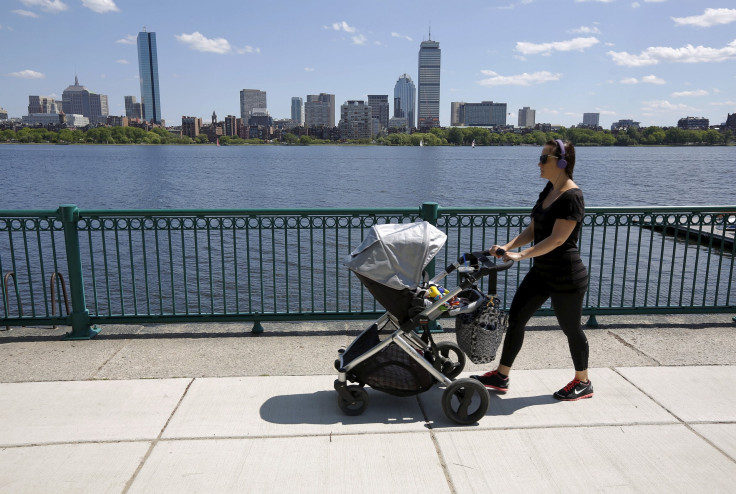Stroller, Baby Carrier Accidents Land An Average 50 Children A Day To ERs

Stroller or baby carrier accidents land an average of 50 children a day in hospital emergency rooms across the United States, findings based on data collected through the National Electronic Injury Surveillance system revealed. A new study found that about two children in the country visit the emergency room every hour for such injuries.
More than 360,000 children aged between five or younger went to the ER for stroller- or carrier-related injuries from 1990 to 2010, the study revealed. According to the report published Wednesday in the journal Academic Pediatrics, fewer than one in five accidents involving strollers or baby carriers resulted in traumatic brain injuries or concussions in 1990. However, the figure increased two-fold to 42 percent in 2010. Many of these injuries occurred when children fell out of a stroller or carrier, or the product tipped over, the study said.
"While these products are used safely by families every day, when injuries do occur they can be quite serious," study co-author Kristi Roberts, a research associate in the Center for Injury Research and Policy at Nationwide Children's Hospital in Ohio, said in a statement. "The majority of injuries we saw were head injuries, which is scary considering the fact that traumatic brain injuries and concussions in young children may have long-term consequences on cognitive development."
The carriers included those that adults can wear to carry the child, as well as handheld carriers such as baby-carrying baskets and carriers that detach from a stroller.
According to the study, most children were sent home after receiving treatment in the emergency department. However, 7 percent children with a carrier-related injury and 2 percent with a stroller-related injury were hospitalized. The study stated that the head and face were the most commonly injured parts of the body.
"As parents, we place our most precious cargo in strollers and carriers every day," Roberts said in the statement. "By taking a few simple steps like making sure your child is buckled up every time he is in his stroller or carrier and being aware of things that can cause these products to tip over can help prevent many of these injuries."
Dr. Leslie Dingeldein, a pediatric emergency physician at Rainbow Babies & Children’s Hospital in Cleveland, said according to the New York Times: "It’s not uncommon to see a child who has fallen out of a carrier that was placed on a bed or a child who was not strapped into a stroller."
In the report, safety experts recommended some tips to follow that can help prevent injuries from strollers and carriers.
- Follow all manufacturers' instructions for properly securing children in strollers or carriers. Make sure your child is seated and buckled in at all times.
- Avoid hanging heavy items like purses and bags on the handle of strollers that can cause them to tip over. Store these items under the stroller or on your shoulder.
- Always check for the model that fits your child. Using the wrong size of strollers and carriers may lead to an accident.
- When parked, always remember to lock stroller wheels to prevent it from rolling away unexpectedly.
- Keep carriers low to the ground so the child has a shorter fall if the carrier tips over.
© Copyright IBTimes 2024. All rights reserved.











